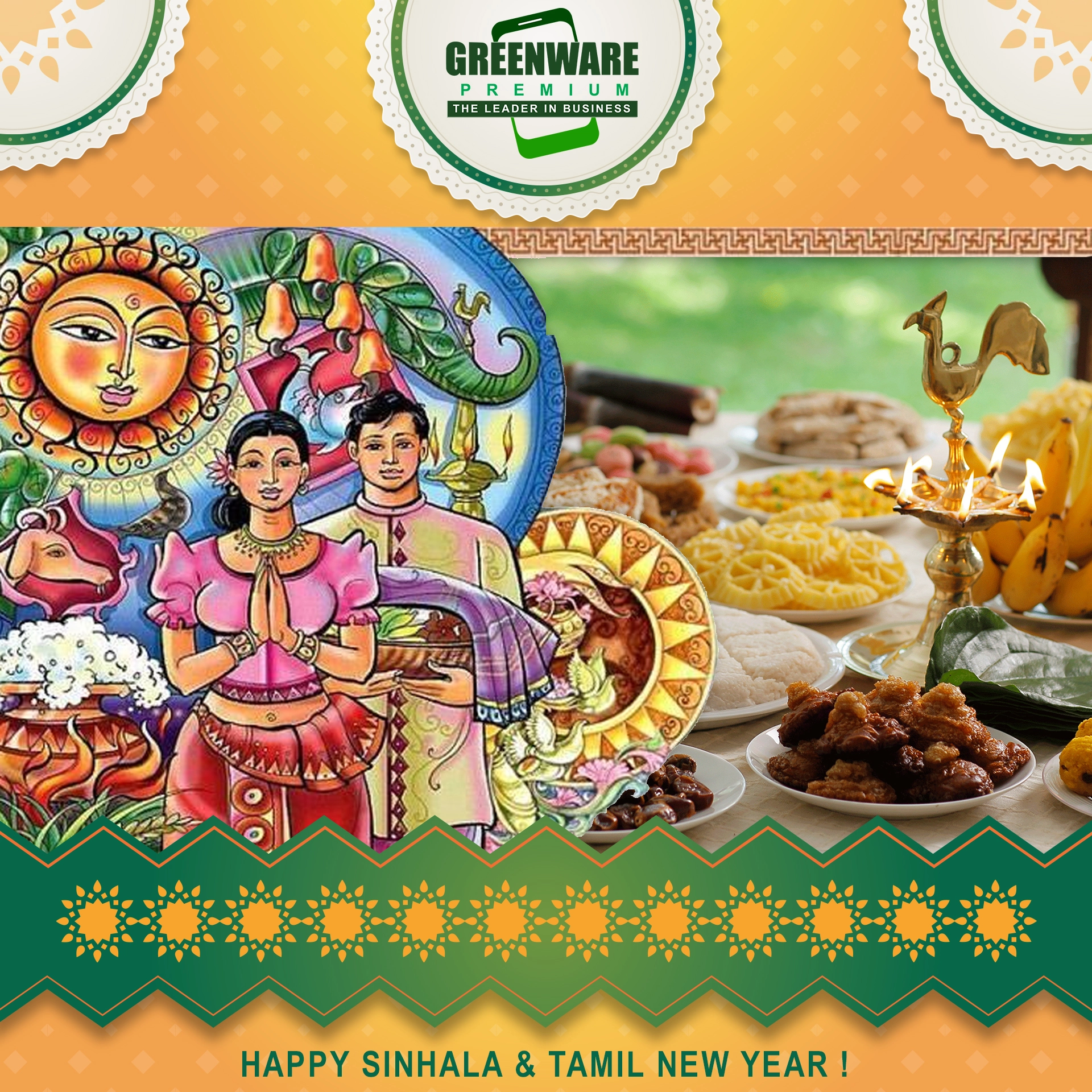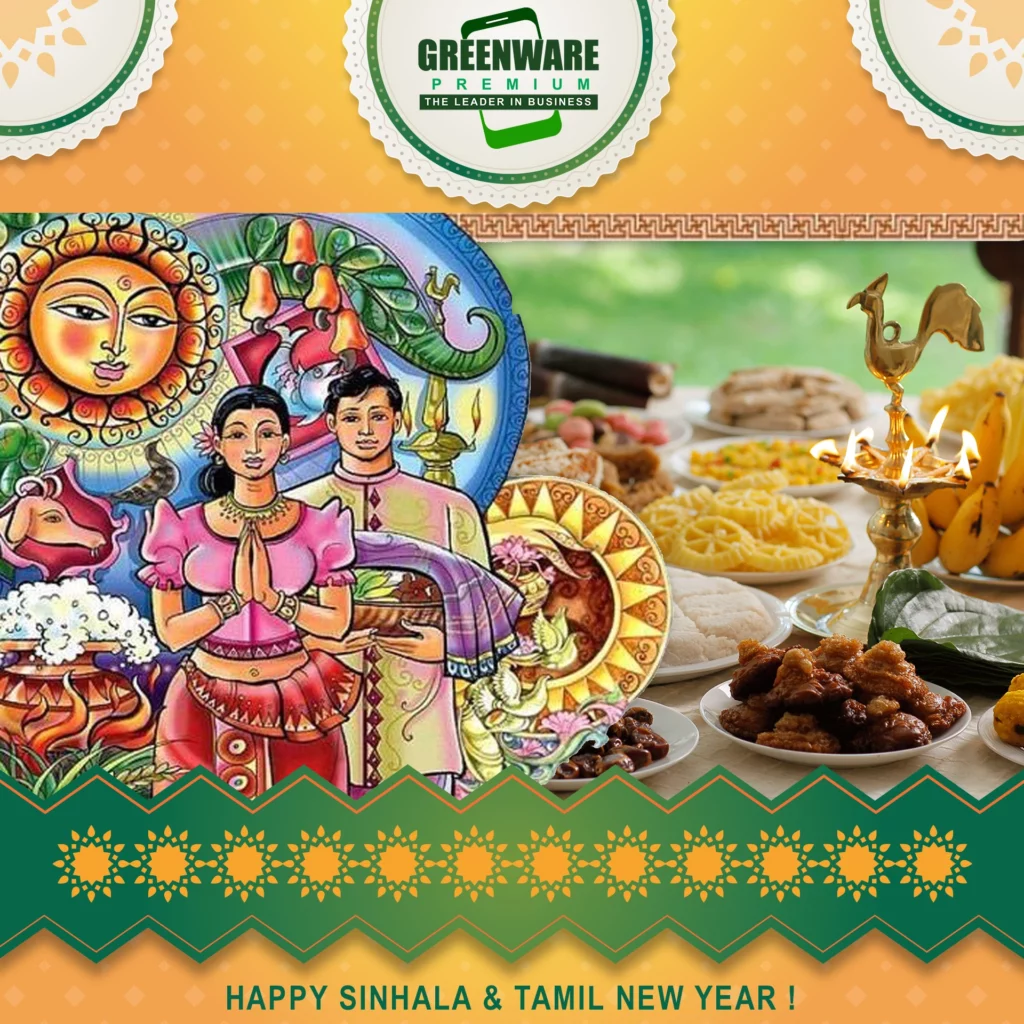Sinhala and Tamil New Year 2024: History, Rituals, & Values 2
Feeling lost in the hustle and bustle of everyday life? The Sinhala and Tamil New Year, celebrated on April 13 or 14 (Saturday, April 13, 2024), offers a refreshing change. This blog post will guide you through the vibrant traditions and rituals that mark this significant festival in Sri Lanka.
Get ready to discover something special!
Key Takeaways
- The Sinhala and Tamil New Year falls on Sat, 13 Apr, 2024 or 14, celebrating the end of harvest and the start of a new season in Sri Lanka.
- Customs include lighting a hearth to cook milk rice, symbolising fresh starts, and sharing traditional sweets like Kiribath, Kavum, and Kokis to strengthen community bonds.
- This festival blends Buddhist and Hindu traditions, showcasing unity among Sri Lankans regardless of their ethnic background.
- Playing traditional games during the New Year reflects values such as respect and cooperation, which are important in both cultures.
- Around the same time, South and Southeast Asia celebrate similar festivals, highlighting shared desires for renewal and prosperity.
Historical Background of Sinhala and Tamil New Year
The Sinhala and Tamil New Year, celebrated on 13 or 14 April, has roots deeply in both the cultures of the Sinhalese people and Tamils. This celebration marks not just the harvest’s end but also bids farewell to spring.
Long ago, these traditions started under the watchful skies of ancient Sri Lanka. They aimed to thank the gods for bountiful crops and sought blessings for rain and farming fortune in the coming months.
Key to this festival is its timing, which aligns with Meena Rashiya’s shift—a specific time when the sun moves from Pisces to Aries, according to astrology. Both Buddhist and Hindu communities find common joy during this period as it blends practices related to Buddhism and Hinduism seamlessly into one grand festivity.
It’s a fine display of shared heritage where everyone looks forward to fresh starts with hope lit in their hearts like the New Year’s first fire.
Rituals and Traditions of the New Year Celebrations
In the Sinhala and Tamil New Year celebrations, rituals light up every home with joy and unity. One key tradition is sparking the hearth to cook milk rice, symbolising a fresh start.
https://www.youtube.com/watch?v=YhW-RmBfezY
Lighting the Hearth
Families start the Sinhala and Tamil New Year by lighting a cooking area. This act is more than just starting a fire. It marks the beginning of something new and brings good fortune to homes.
Done with care, this ritual uses an oil lantern, setting a peaceful tone for the celebrations ahead.
This part of the festival shows our respect for fire’s role in our lives, from cooking meals like milk rice to lighting up dark spaces. Everyone gathers around, eager to see the flame catch and grow, symbolising hope and renewal for the year coming their way.
The warmth of this tradition ties closely with Sri Lankan culture, reminding us all about family, unity, and fresh starts.
First Meal at the Avurudu Table
The Avurudu table comes alive with milk and rice to signify wealth and happiness. This meal starts the celebration of the Sinhala and Tamil New Year in style. Everyone gathers around to share this special dish, feeling joyful together.
The table also boasts a variety of traditional sweets like Kiribath, Kavum, and Kokis. These treats not only taste delightful but also bring families closer, sharing pieces as symbols of unity.
Making these foods follows age-old recipes passed down through generations. Each sweet has its own unique twist, making them timeless favourites during the festival. After enjoying this feast, communities come together to light the hearth—a sign that the New Year’s blessings are about to flow into their homes.
Next on the agenda are new-year games in Sri Lanka.
The Significance of New Year Sweets
Sinhala and Tamil New Year sweets like Kiribath, Kavum, Kokis, and more hold a special place in the celebrations. These treats are not just food; they carry deep meanings. Each one symbolises prosperity, happiness, and unity among families.
People make them with care to share with relatives and neighbours. This sharing builds stronger bonds within communities.
Families gather around the Avurudu table loaded with these traditional delicacies. Enjoying these sweets together marks the start of a hopeful new year. It’s a time when everyone forgets their troubles and looks forward to the good times ahead.
Sharing sweets is a way of wishing each other good health and success in the coming year.
The cultural impact of the Sinhala and Tamil New Year is significant
The Sinhala and Tamil New Year, known as Aluth Avurudda and Puthandu, brings people together in a vibrant celebration of renewal. It marks a time when Sri Lankans, regardless of their ethnic background, share joy and good wishes.
This festival forges unity among the Sinhalese community and Tamil people, showcasing the power of traditions in bridging differences. Through shared rituals like lighting the hearth and partaking in special meals at the Avurudu table, residents strengthen bonds within families and communities.
This period also serves as an important reminder of Sri Lanka’s rich cultural tapestry. The observance of the festivities reflects the influence of Buddhism and Hinduism, reflecting centuries-old customs passed down through generations.
Activities such as playing traditional games highlight not just fun but also values such as respect, humility, and cooperation that are central to both cultures’ teachings. Thus, Aluth Avurudda/Puthandu plays a vital role in reinforcing identities while promoting mutual understanding across diverse groups within the island nation.
Other related festivals
Many cultures across South and Southeast Asia celebrate the advent of their own New Year around the same time as Sinhala and Tamil New Year. These festivals share similarities, showcasing a vibrant tapestry of traditions that bind different people together.
For instance, Sri Lankan celebrations reflect a communal spirit similar to Thailand’s Songkran, which involves joyful water throwing to wash away bad luck.
In India, regions mark this period with varied names and customs, from Ugadi in Karnataka and Andhra Pradesh to Baisakhi in Punjab. Each festival, while unique in its practice, signifies renewal and hope, much like Sinhala Avurudu does for the Sinhalese and Tamils in Sri Lanka.
This shared sentiment across borders highlights how human desires for prosperity and happiness transcend cultural differences, bringing communities closer together during these auspicious times.
Conclusion
The Sinhala and Tamil New Year stand out as a vibrant blend of cultural rituals, delicious feasts, and community games. This celebration turns every corner of Sri Lanka into a hive of joy and unity.
It draws from the island’s deep-rooted history, mixing Buddhist and Hindu traditions to create something truly special for everyone involved. From lighting the hearth to sharing sweets that signify good fortune, each custom carries a rich meaning.
As spring breathes new life into the world around us, this festival reminds us all to pause, reflect on our harvests—both literal and metaphorical—and look forward with hope.
FAQs on Sinhala And Tamil New Year
Families prepare special meals, including deep-fried treats, to share with loved ones. The day is filled with various rituals that symbolise values such as respect, sharing, and unity among communities. For Buddhists, this festival ties back to the advent of Buddhism in Sri Lanka; it’s a time to reflect on Nirvana and Buddhist traditions. Hindus closely associate it with their mythology and practices. Yes! Children and adults alike play a variety of games, from traditional sports to board games, all designed to foster community spirit and joy among participants during this festive time. How do people celebrate this New Year?
Why is it significant to Buddhists and Hindus?
Are there any unique activities during the Sinhala Hindu New Year Festival?









is this mobile shop or cultural shop? LOL
Dear Hassim,
Greenware.lk is an e-commerce platform specialising in mobile and electronics sales, but it also embraces cultural celebrations like the Sinhala and Tamil New Year in Sri Lanka.
Their involvement in cultural events highlights a unique blend of commerce and tradition, showcasing their commitment to being more than just a mobile shop.
They engage in the festival to connect with the community, celebrate Sri Lankan heritage, and offer special promotions, demonstrating a business approach that values both technology and tradition.